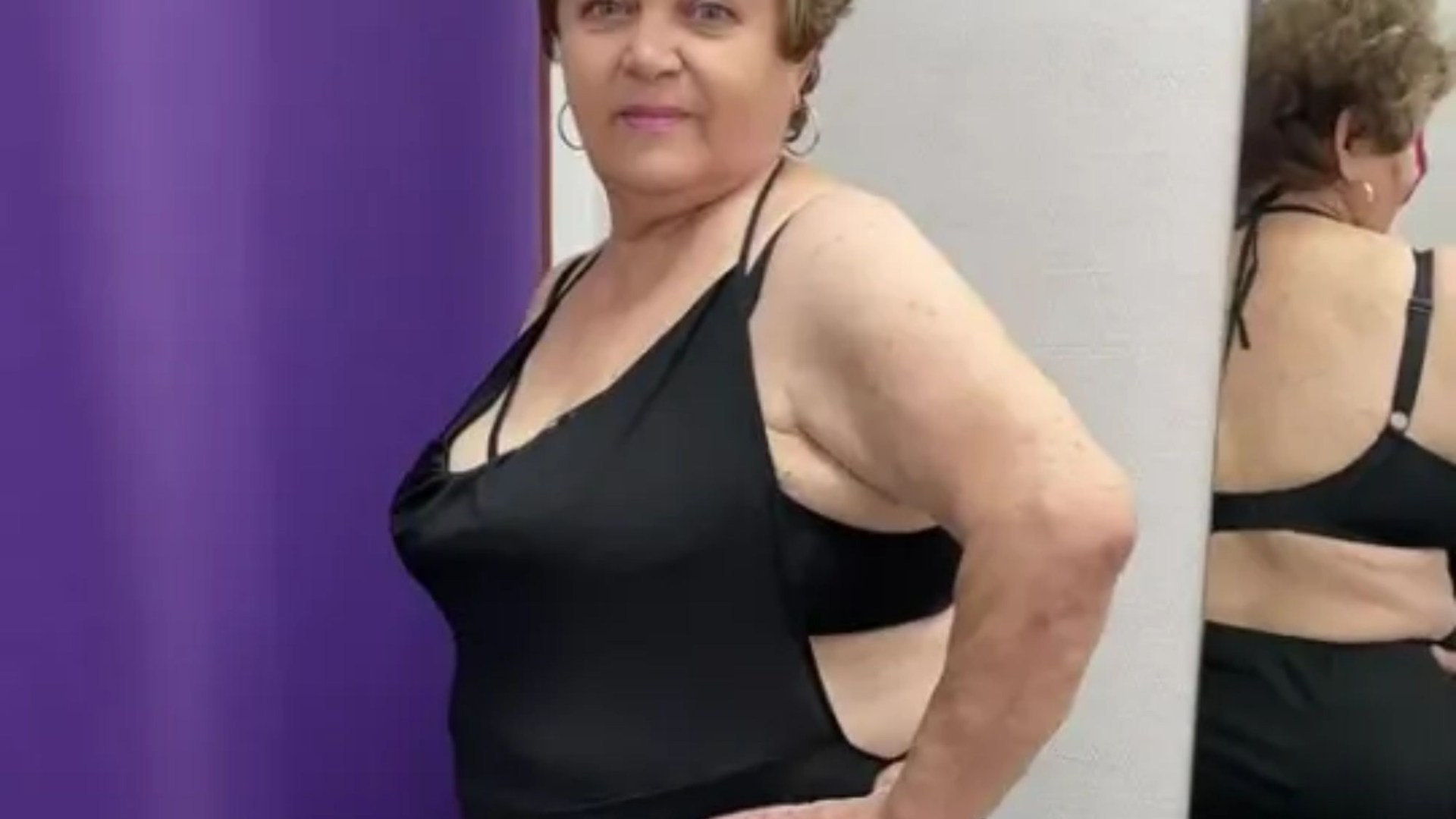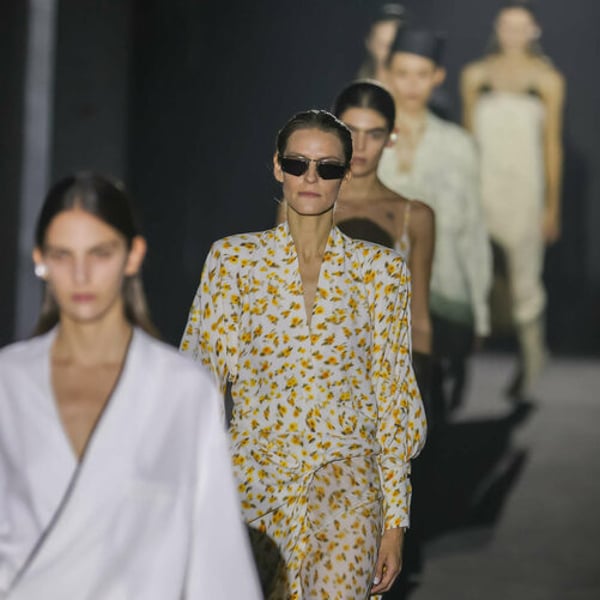The Nuanced Shifts Defining AW25’s Runway Trends
Courtesy of various brands
As fashion’s traditional calendar continues to fracture (with Moncler and others charting their own course outside fashion month,) and creative directors play musical chairs (Demna adding Gucci to his portfolio while Jonathan Anderson bids farewell to Loewe after a transformative tenure), the industry finds itself at yet another inflection point. Within this shifting landscape, the AW25 season emerges as a moment of thoughtful recalibration rather than dramatic revolution.
The collections presented during the recent Paris, Milan, and London shows reveal designers navigating the tension between innovation and heritage. Olivier Rousteing at Balmain introduces a new Balmain woman — an explorer who evolved to embrace sensuality as well as her usual loud sexiness — while transforming the runway into a journey across varied landscapes. Coperni creates a nostalgic 90s LAN party experience that celebrated community in the digital age, featuring laid-back outerwear and high-octane dresses styled with tantalizing accessories.
AW25 looks from Balmain (left) and Coperni
Balmain, Coperni
In a world of constant industry churn and escalating consumer fatigue, many houses opted for evolution over disruption, refining their codes rather than reinventing them entirely. Moncler’s recent Alpine extravaganza exemplifies how brands are creating immersive experiences to connect with audiences, while houses like Hermès and Bottega Veneta chose to maintain a firm focus on quiet craftsmanship that speaks through material innovation and technique.
The post-pandemic rise in consumer’s desire for enduring elegance means a significant shift in how fashion houses approach functionality and practicality. Acne Studios’ collection explicitly addressed this duality through what Jonny Johansson describes as “the contrast between two worlds and two sides of the same woman — one rooted in the North, now navigating the fast-paced energy of the city.” Bold shoulders are here to stay on corporate-inspired blazers, with sheer flowy dresses and exaggerated pussybow ties adding a touch of structured romanticism. This tension between urban realities and natural environment was a recurring theme, with protective shapes that provide comfort taking center stage at many shows while brands attempt to inject a dose of coziness while maintaining their distinctive aesthetics.
AW25 looks from Acne Studios (left) and Moncler
Acne Studios, Moncler
Victoria Beckham’s exploration of “the compulsions and coincidences that shape the clothing ceremony” shows how brands are reconsidering everyday dressing rituals, focusing on pieces that feel instinctive and adaptable to modern lifestyles. Muted utility tones compliment timeless blacks, offering a range of looks that are polished, wearable, easy to build-upon and quietly sexy. Similarly, Carven’s collections highlighted “clothes as if borrowed; loose form evoke another’s fit,” acknowledging the fluid, personal ways consumers interpret modern garments. Oversized knits, chunky layering and cozy textures sum up the OG label’s autumnal note.
Fabrics and textures emerged as powerful storytelling devices across the AW25 runways, with the season featuring rich tactile experiences that convey emotional narratives through material choices.
AW25 looks from Victoria Beckham
Victoria Beckham
Balmain masters contrasting textures: think gentle cashmere and mohair clash with the fierceness of rich leather, with armor-like garments featured heavily in-between. From plush Tuscan shearling and fluffy furs to structured tweeds and supple leathers, Yves Salomon paints a rich sensual experience that elevates its minimal, androgynous silhouettes. Heritage brands like Ermanno Scervino emphasizes on craftsmanship techniques that has become a key signifier for its brand value: “Embroideries are an intimate expression of the Maison’s soul,” the brand shares in notes, with shearing collars and see-through lace midi skirts following the brand’s signature aesthetics. Magda Butrym, the Polish ready-to-wear brand famed for its feminine silhouettes fused with muted masculine elements, paid homage to the Polish weaving traditions with an immersive scenography featuring 200 meters of hand-woven fabric.
This season’s most innovative textile blurs boundaries between technology and tradition: Sacai incorporates “photo stitch” embroidery featuring Man Ray’s work, showcasing a collection that’s part Highland Warrior Princess part Manhattan business woman, abundant in intricate craftsmanship; while Coperni develops an innovative machine-embroidered pearl textile that mimics the glitching static of screen noice, “with each pearl representing a pixel.”
AW25 looks from Ermano Scervino (left) and Sacai
Ermano Scervino, Sacai
AW25 look from Schiaparelli
Schiaparelli
AW25 collections also see designers placing thoughtful consideration on brands’ identities and cultural heritage, with many houses showcasing looks balancing their archives with forward-looking innovations.
Schiaparelli’s “Lone Star” collection found Daniel Roseberry reconnecting with his Texan roots while honoring Elsa Schiaparelli’s legacy, finding that sweet spot between masculine and feminine, between submission and control, between extravagance and rigor. At Nina Ricci, Harris Reed continues his modern interpretation of the house’s romantic glamour through a collection which “illuminates the new era of the Nina Ricci woman.” Not quite for AW25, but Jacquemus’s drop of “LES 15 ANS” in celebration of its 15th anniversary also bring back the brand’s iconic archive pieces, reedited.
Emerging designers like Dilara Findikoglu uses mythology to express feminine identity, creating “Venus from Chaos” as a world where “the gravity of patriarchal oppression is countered by the power of conviction and the lightness of imagination,” further cementing the return of Medieval chic. Similarly, Songs of Siren’s debut collection channels “the Siren’s historical symbolism of autonomy and seductive command, repositioning it as an emblem of empowerment rather than subjugation.”
AW25 looks from Dilara Findikoglu
Dilara Findikoglu
Color direction evolves beyond seasonal expectations in AW25, reflecting changing consumer tastes. Traditional autumnal palettes are enriched with unexpected combinations and meaningful color stories.
Acne Studios presents a warm mix of brown, oat, honey, and beige, all paired with bold 1970s-inspired shades of Bordeaux red, purple, and gold, creating a nostalgic yet contemporary feel. Carven’s collection features “austere with joyful” tones: “Jet blacks. Midnight, blazer, cobalt, powder and cyan blues. Jolts of blush, dusty pink, camel, fawn and skins.”
Black remained a powerful statement color across brands’ collections, but is frequently enlivened with unexpected pops of vibrant hues. Lacoste’s FW25 presentation incorporates vibrant pink as a standout accent to “timeless neutrals, while Courrèges employs a muted “sci-fi palette” that feels both futuristic and wearable.


